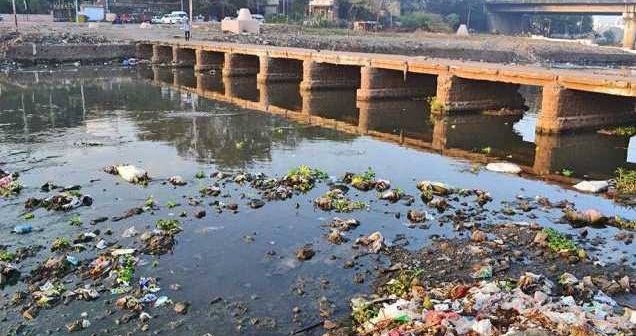Pune’s rivers, particularly the Mula, Mutha, and Pavana, were once central to the city’s charm, offering scenic beauty and a critical water supply. Today, these rivers are among the most polluted in India, a transformation driven by unchecked urban growth, inadequate sewage treatment, and industrial discharge. The rivers, now filled with untreated waste and pollutants, present a grim picture of how urbanization can degrade natural resources.
The Extent of Pollution
The Mula and Mutha rivers, which flow through Pune, are severely affected by pollution. The main culprit is untreated sewage, with approximately 30% of the city’s sewage flowing directly into these rivers without proper treatment. This leads to a rise in Biochemical Oxygen Demand (BOD) levels, exceeding the permissible limits for clean water. Recent studies show that BOD levels in some sections of these rivers have risen above 30 mg/L, far beyond the safe standard of 3 mg/L, indicating significant organic pollution.
Adding to this crisis is the city’s rapid urban expansion, which has led to greater water consumption and waste generation. Pune’s municipal water supply far exceeds the current needs, exacerbating the volume of wastewater produced. Despite having sewage treatment plants (STPs) capable of treating 599 million liters per day (MLD), the infrastructure cannot keep up with the demand, leading to untreated water entering the rivers.
The Role of Industries and Solid Waste
Apart from sewage, the Mutha River also suffers from industrial waste, particularly from Pune’s once-thriving textile industries. Industrial discharge, combined with religious and domestic waste, significantly degrades the water quality. The river’s dissolved oxygen (DO) levels, crucial for supporting aquatic life, have plummeted due to this unchecked pollution.
Community and Government Responses
There have been ongoing efforts to tackle the pollution crisis. Initiatives like the Jeevitnadi movement focus on rejuvenating the rivers through community participation. Volunteers regularly conduct clean-up drives and awareness campaigns. Projects aimed at creating wetlands and separating clean water from contaminated sources are also underway, with the aim of improving water quality and restoring ecological balance(.
However, these community efforts are not enough to combat the scale of the problem. The Pune Municipal Corporation (PMC) has been repeatedly urged by environmentalists and civic bodies to enhance the efficiency of sewage treatment and to build more STPs. Despite penalties imposed on local authorities for their failure to manage waste, progress remains slow.
Where Do We Go From Here?
For Pune to restore its rivers, a multifaceted approach is necessary. This includes:
- Upgrading sewage treatment infrastructure: Increasing the capacity of existing STPs and ensuring that all sewage is treated before being released into rivers.
- Stricter industrial regulations: Monitoring industrial discharge and enforcing penalties for non-compliance.
- Public awareness and involvement: Expanding community-led initiatives like Jeevitnadi and encouraging more citizen participation.
- Long-term planning: Integrating ecological considerations into Pune’s urban planning, ensuring that infrastructure keeps pace with population growth.
Pune’s rivers, once a source of pride and natural beauty, now reflect the darker side of rapid urbanization. Without urgent and sustained action, their fabled charm may remain lost to pollution and neglect.





